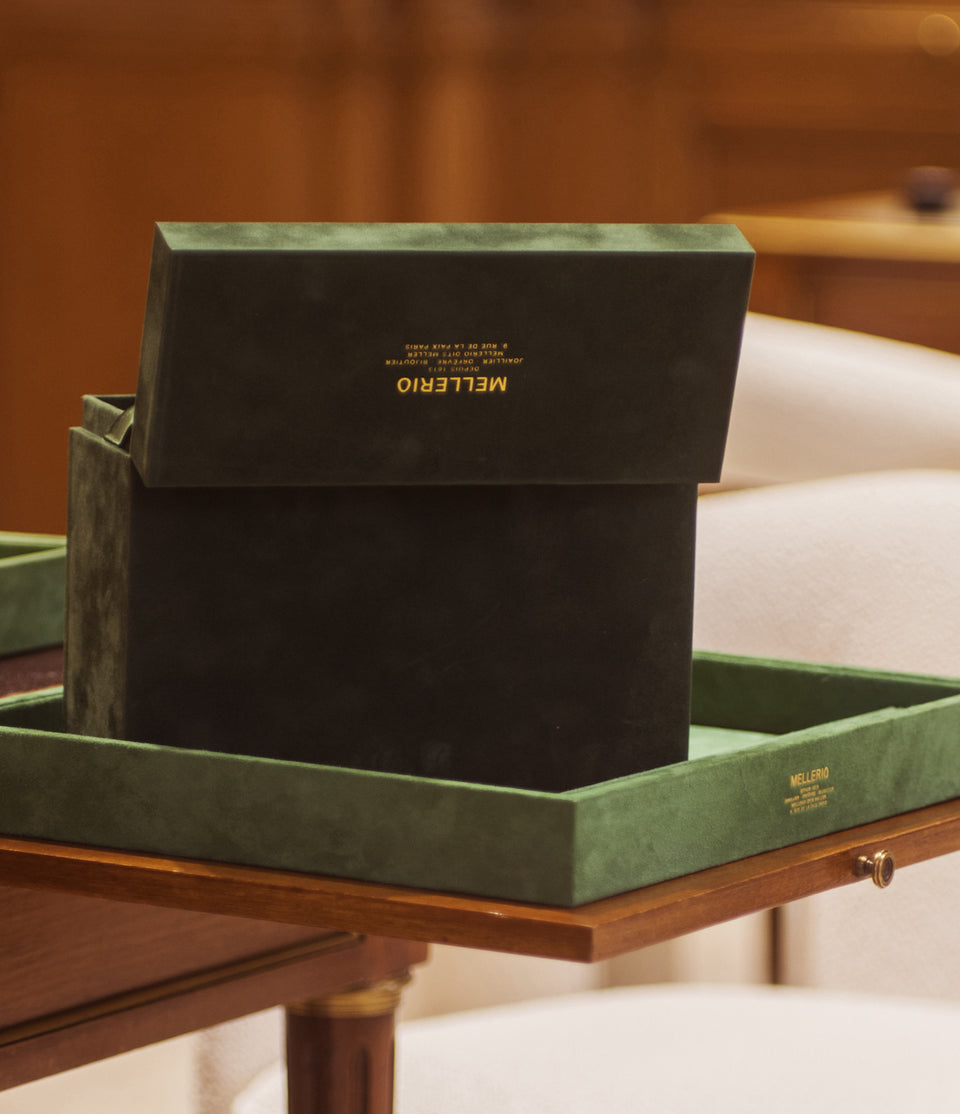
Mellerio over time
Mellerio: 15 generations of family history
Since 1613, the Mellerio family has ruled the best-kept secret address for jewelry. Still in charge of the oldest house of jewelry in the world and the first to settle in the Place Vendôme area, the Mellerios have gone through four centuries of French History.
15 generations have transmitted one to another values of work, creativity, savoir-faire, but also honesty and discretion, still today at the core of the last independent house of jewelry in France. A unique heritage.
The Mellerio family is a dynasty of French jewellers of Italian origin, from a small mountain village in northern Italy, in the Val Vigezzo.
In 1515, like many Italian artists, the Mellerios, along with other families from their valley, decided to move to France. They settled in Paris, on a street called rue des Lombards. A century later, an event was to change and transform the lives of the Mellerios. In 1613, Queen Marie de Medicis granted them privileges as a reward for foiling a plot against her young son Louis XIII. This decree authorises them to practice in France without having to submit to the administrative restrictions generally applied. All the kings of France up to Louis XVI renewed this exceptional privilege.
And so begins the singular and meteoric rise of the Mellerio family.
From his earliest youth, Jean-Baptiste Mellerio, son of Jean-Marie Mellerio, managed to sell jewelry near the gates of the Château de Versailles. One day, Marie-Antoinette overheard him and was amused... The gates were opened, and from then on he had access to Versailles and became the Court's supplier. It was during the reign of Louis XVI that the Mellerio's Maison began to occupy a significant place in French jewelry. It specialised above all in the luxury products that Marie-Antoinette liked to give to her close friends. This recognition enabled Jean-Baptiste Mellerio to open a boutique at 20 rue Vivienne, under the sign "Mellerio - Meller à la couronne de fer", where he benefited from the clientele of Empress Josephine, who authorised Mellerio to visit the Tuileries whenever they had something new to see. The Empress subsequently introduced them to her entire entourage, including the entire Bonaparte family.
While the Rue de la Paix is becoming one of the most desirable avenues in Paris with the opening of numerous shops specialising in the luxury goods industry, Mellerio has the advantage of being one of the first to open.
In 1815, François Mellerio set up his shop on rue de la Paix, an ideal location where no jeweller was yet present. In 1830, when Marie-Amélie and Louis-Philippe d'Orléans acceded to the French throne, Mellerio was appointed official supplier to "Her Royal Highness, the Queen of the French".
She authorised the Mellerio family to place this title at the entrance of their house. For the duration of her reign, Marie-Amélie did not use the Crown Jewels Collection for the sake of simplicity, but wore her personal jewels, most of which were made by Maison Mellerio.
During the Second Empire, balls were organised in the capital and were admired by all the European courts. These social gatherings were an opportunity to reveal the latest acquisitions from Parisian jewellers. During this period, the Emperor Napoleon III and above all Empress Eugénie, with whom the House maintained almost friendly relations, were Mellerio's most important buyers.
The revolution of 1848 caused a serious economic crisis in France. The Mellerio brothers were looking for a new market and decided to try their luck abroad by setting up in Madrid, Spain, where they opened the "Mellerio-Hermanos" sign in 1850. The company quickly took on numerous orders from Queen Isabel II and the Spanish high nobility.
Jean-François Mellerio made his first tiara, a simple tiara of gold laurel and pearls. This tiara was made for Countess Eugénie de Montijo. When she became Empress of the French, she showed her confidence in the Maison by becoming the most important customer in its history. Indeed, she visited Mellerio almost every week during the Second Empire.
At the end of the 19th century, it was the Dutch Court that filled Mellerio's order books. Notably with this impressive set of rubies, often worn today by Queen Maxima of the Netherlands. The set is composed of 36 exceptional rubies, and was ordered for the coronation of Queen Emma in 1879.
The foreign clientele grew considerably and included members of almost all the European nobility. The store in the rue de la Paix welcomed personalities from all over the world: the Orléans, the Rothschilds, the courts of Spain, Russia, Italy and Belgium, diplomats, intellectuals and artists...
Whether they come from the East or Africa, the arrival of personalities from these faraway continents is always perceived as sensational. Somptuous receptions were organised in honour of The Maharaja of Kapurthala, who was used to travelling frequently to Europe, in Paris, London or Vienna.
During one of his quick visits to Paris in October 1905, he entered the store located at 9 rue de la Paix and purchased two ravishing Mellerio jewels. One of these two purchases is an emblematic piece of the Maison. It is a peacock aigrette, made entirely of diamonds on coloured gold. The animal's body is enamelled, and the shimmering colours mingle with the fire of the 2,984 rose-cut diamonds, producing a stunning effect.
The Second Empire was marked by 3 World Fairs (1855, 1862 and 1867), which showcased the various artistic and technical trades of the time. Maison Mellerio quickly understood the international issues they represented and distinguished itself at each of them by winning many prizes. These exhibitions were an opportunity for the company to demonstrate its creativity and daring, which were recognised by all the visitors and journalists.
In 1854, Mellerio filed a patent for a flexible stem that could be used to recreate the oscillating movements of fruit and flower twigs. In 1855, Mellerio was awarded the Médaille d'Honneur at the Paris World Fair for his naturalistic creations and doubled his clientele.
In 1862, the Universal Exhibition in London strengthened the House's reputation and enabled it to reinforce its style and expertise. At this event, Mellerio was once again singled out and awarded the Prize Medal for "excellence of design and execution" thanks to the presentation of the strikingly realistic Lilas Brooch and its archaeologically inspired creations.
The 1867 World Fair in Paris awarded Mellerio the gold medal for its achievements, in particular following the presentation of the first large peacock feather brooch with jewels and the Rocaille tiara, which was bought by Queen Isabel II of Spain.
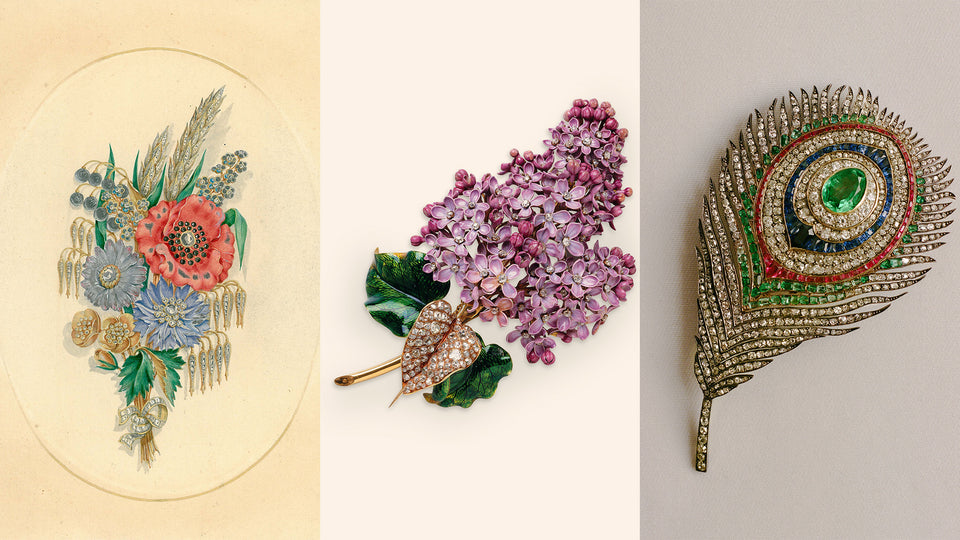
A century later, a new innovative and audacious patent was filed in 1951 to protect the invention of a decorative nail ornament. These fake nails, made of palladium and diamonds, feature a frame that follows the contour of the nail as it comes into contact with the finger, with the outside of the frame adorned, decorated and perforated with diamonds.
In 1984, the international expansion took shape once again with the opening of several points of sale in Japan.
The empress Masako Owada of Japan loves the Mellerio watch and she always wearing it during public events.
At the beginning of the 20th century, society began to lose interest in Art Nouveau jewelry. Fine stones were gradually abandoned in favour of precious stones. Rivers made a comeback at the beginning of the decade. The most emblematic piece from this period was the pearl necklace. The straight cut was in fashion, and there was no better jewelry than the pearl sautoir to enhance this silhouette.
Mellerio was sensitive to changes in fashion and took advantage of this new trend, becoming the Parisian House's reference for pearls.
Subsequently, the House's links with fashion became closer. In the 1950s, Mellerio signed a number of collaborations with leading couturiers such as Christian Dior Couture, Pierre Balmain and Balenciaga on the catwalks.
Faithful to its original expertise in goldsmithing, Mellerio has created some of the finest sporting awards. These include the Chausson d'Or in 1955, the Ballon d'Or since 1956, which is now one of football's most legendary trophies, and the trophies for the French Open Roland Garros since 1981.
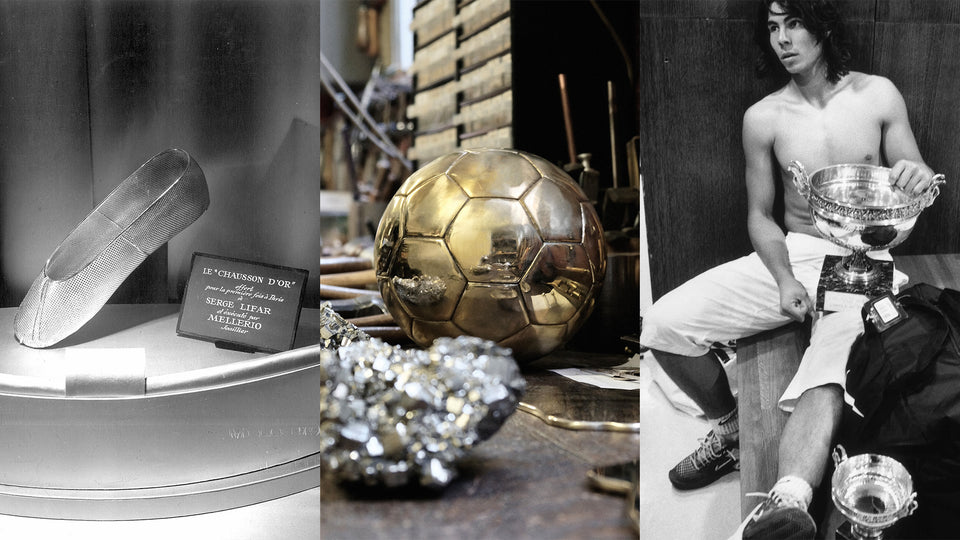
In the 1980s, at a period when most of the jewelry houses at the Place Vendôme were joining large groups, Mellerio decided to remain an independent, family-owned Maison. This choice is explained by the desire to continue to offer a personalised customer experience for every special occasion in their lives.
For 14 generations, Maison Mellerio has willingly inserted a reminder of its origins into its contemporary creations by means of a subtle geometric formula, totally discreet yet recognizable among a thousand initiates : this wink - devoid of any ostentation but equivalent to a signature - is illustrated by an oval inscribed in an ellipse. This ovoid motif has lent its mystery to the most famous creations of the jeweler on the rue de la Paix, multiplying in particular on the legendary peacock feather brooch designed for Empress Eugenie in 1868.
In this characteristic cut, the shape and memory of a mythical stone is reflected: the Beau Sancy. This diamond of Indian origin, of prodigious purity, was the stone of choice of Marie de Medici. This expertise has been passed from generation to generation since 1613, and is now the signature of the Maison's watchmaking, jewellery and fine jewellery.
To celebrate its 400th anniversary, Mellerio has created an exceptional piece of high jewelry in tribute to Queen Marie de Médicis. It took Mellerio 10 years to harvest the exceptional rubies and 4,500 hours of work to create this highly technical piece. Indeed, lightweight and flexible, the collar adapts to all types of neck. The lilies all over the collar represent royalty.
Color is one of the Maison's signatures, which can be traced back to Mellerio's Italian origins. This signature is also found in the chromaticism of its creations. Playing on contrasts and cameos, Mellerio jewelry creates a playful, poetic palette that evokes Mediterranean joy. The brilliance of yellow gold, the softness of pink gold and the strength of green gold reinforce the play of colours. Colorful pieces of jewelry that combine historical heritage with contemporary vitality become a source of pleasure and, even more, an invitation to dream.
Laure-Isabelle Mellerio, representing the 14th generation of the Mellerios, a family originally from Craveggia in Italy, is interior designer, art historian, and gemmoly graduate. Today she is both president and artistic director of the oldest and last family owned jewelry house in France. Her ambition is to nurture the authentic and contemporary image of the Maison and ensure the awakening of this exceptional and unique best kept secret luxury house thanks to effortless but elegant and stylish creations, inspired by Italy and her own signature: contrasts of volumes, colours and materials.
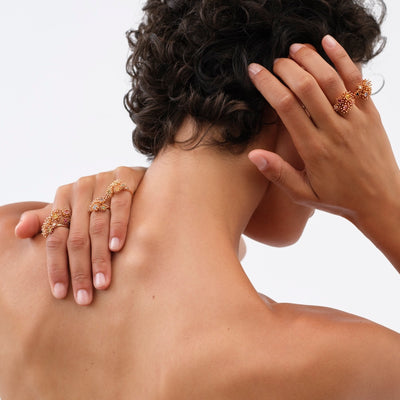 Le Petit Cactus collection
Le Petit Cactus collection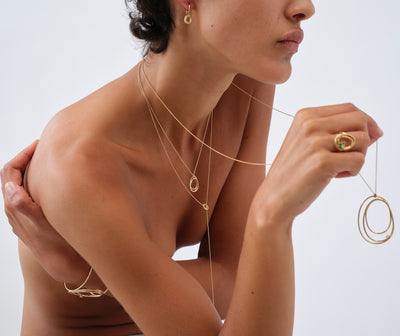 Riviera collection
Riviera collection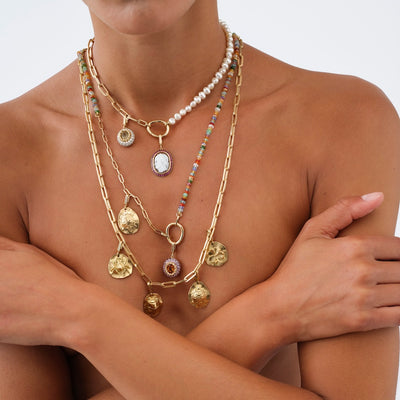 Our medals
Our medals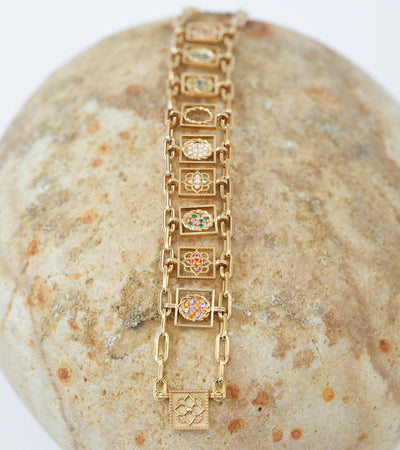 Jardins Suspendus
Jardins Suspendus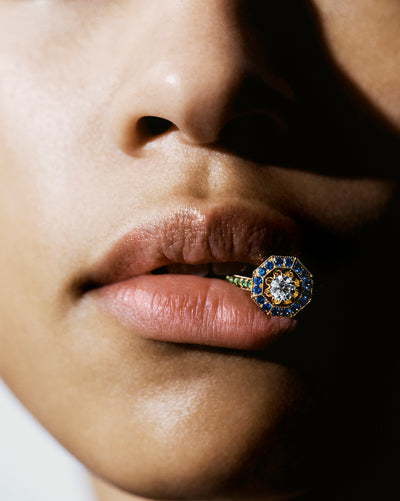 Vérone rings
Vérone rings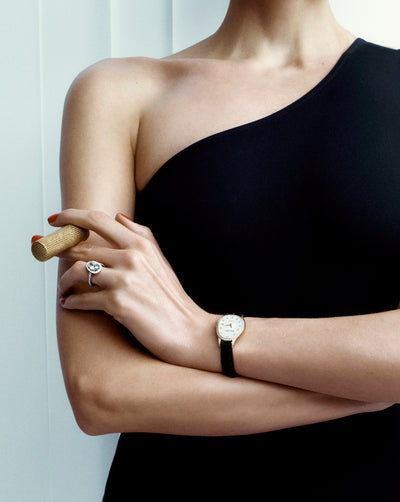 Mellerio Cut ring
Mellerio Cut ring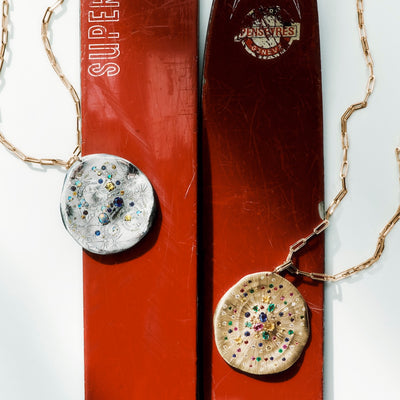 Jumbos Talismans
Jumbos Talismans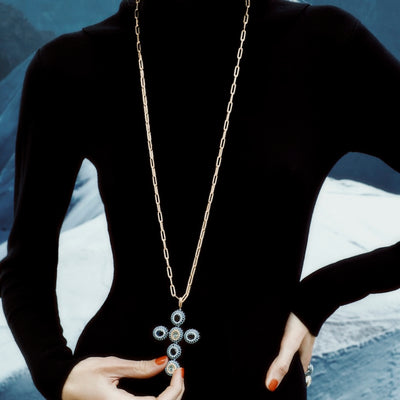 Color Queen Cross Black and White
Color Queen Cross Black and White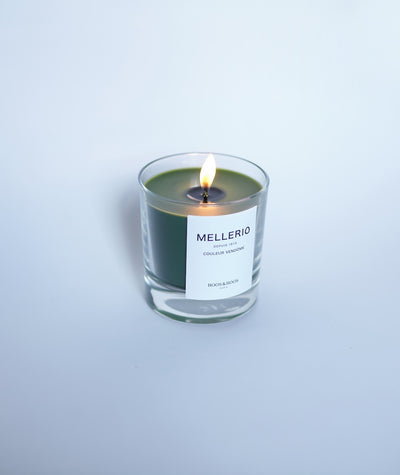 Our Candle
Our Candle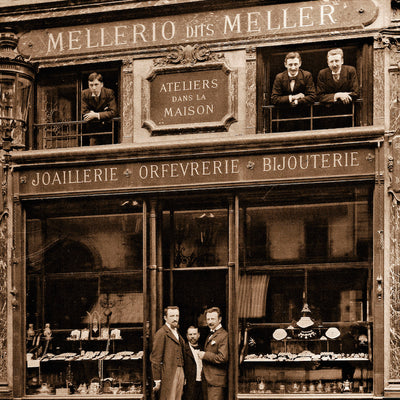 Our Maison
Our Maison